Islamic Week in London: Overview of the Most Prestigious Auctions
|
Twice a year, London main auction houses gather for a week dedicated to Oriental arts. This autumn, Christie’s, Sotheby’s and Bonham’s selection is particularly interesting. All three houses offer little known or completely unknown treasures and set interesting new trends that will have to be observed in future auctions.
|
 |
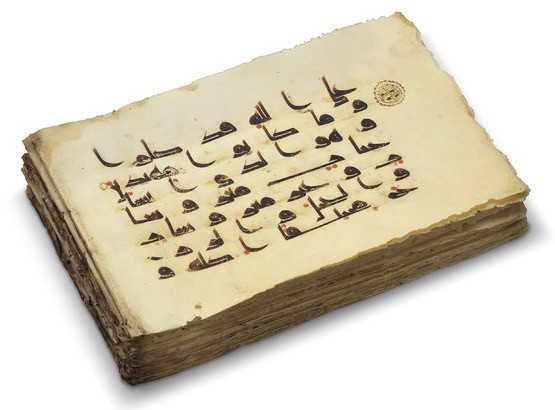 |
|
|
2. Kufic Qur'an section - Christie’s lot 3, £40,000-60,00 |
| This noticeable distrust of auction houses for pre-14th-century material seems to confirm the fact that the spotlight is now on pre-modern productions, namely Ottoman in Turkey, Safavid and Qajar in Iran, Mughal and provincial schools in India. This new trend was already showcased during the spring Islamic week last April but is now being confirmed by the large selection of pre-modern ceramics. Christie’s and Bonham’s both display important ensembles of Safavid tiles from the 17th and 18h centuries (3), but the spotlight gets more especially on Sotheby’s with their two leading lots. The first one is a blue and white Iznik dish (4), produced in Ottoman Turkey during the 15th century. Iznik productions from the 16th and 17th centuries are particularly famous for the brick-red pigment used to decorate a reduced and characteristic decorative repertoire of tulips, peonies, and cypress trees, but the ceramics produced earlier emulate a different kind of inspiration. The use of cobalt blue and white is a direct reference to Chinese porcelains, particularly appreciated by Ottoman collectors, but the repertoire of decorative patterns differs from their oriental model toward more specific designs. The large dish presented by Sotheby’s is mainly composed of an arabesque of Rumi Motifs, while the palette integrates different shades of blue. This specific kind of ceramics is particularly rare, less than ten are currently preserved in public and private collections, which justify its valuation at £300,000-500,000. |
 |
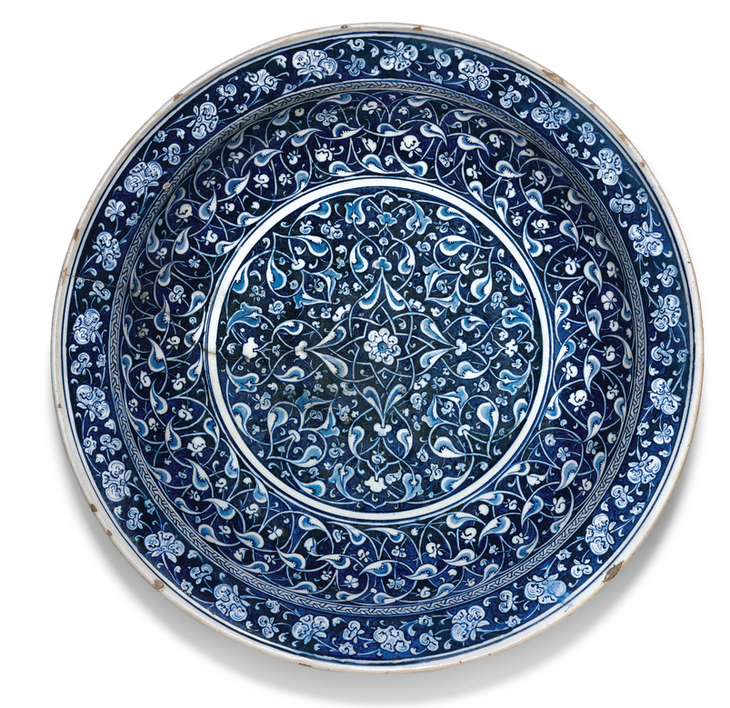 |
|
3. Safavid Tile - Bonham’s lot 41, £3,000-5,000 |
4. Iznik pottery charger - Sotheby’s lot 134, £300,000-500,000 |
|
The second main lot is a tile panel produced in Diyarbakır, in Ottoman Turkey, at the end of the 16th century (5). Composed of twelve tiles richly ornamented, it was designed to fit a mihrab, the traditional niche placed in the Qibla wall of a mosque, toward which Muslims turn to pray. Diyarbakir production differs from Iznik in its decoration, more complex and intricate. This impressive ensemble, reaching 1.36m high, astonishes by the diversity of its decoration and the refinement of its ornament. Like the Iznik plate, it got an estimation of £300,000-500,000. |
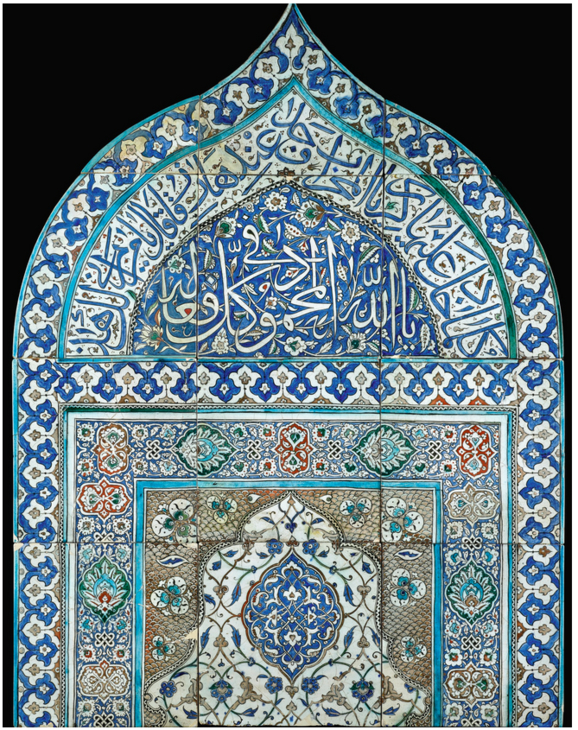 |
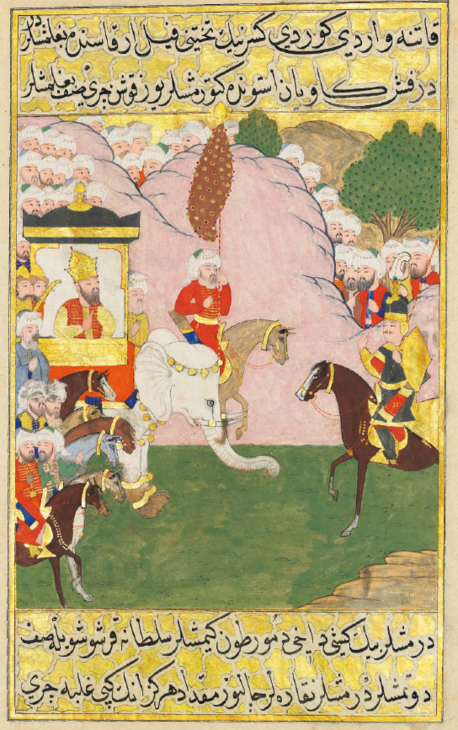 |
|
| 5. Diyarbakir mihrab tile panel - Sotheby’s lot 181, £300,000-500,000 | 6. Miqdad bin Aswad, 1594-95 - Christie’s lot 225, £80,000-120,000 |
Finally, all three auction houses offer Mughal and late-Mughal objects and manuscripts. Buying Indian art has become increasingly difficult throughout the years as more and more fakes have reached the market. However, the number of Indian paintings offered during Islamic weeks doesn’t seem to decrease. The same goes from jewellery, particularly represented at Sotheby’s despite being incredibly hard to date with certitude. Bonham’s, in particular, presents a large number of paintings, mainly “sub-imperial” and “provincial” but tends to lower estimations. Christie’s does the same, for instance with a folio from the famous Chester Beatty Tuttinama (172), only valued at £8,000-12,000 despite its historical importance, as well as for a page from the first Baburnama (174) dated by scholars around 1589 and only offered at £15,000-20,000 (7). The comparison with contemporary Ottoman paintings shows well that Indian painting doesn’t have the wind in its sails. |
 |
 |
|
7. Baburnama, c. 1589 - Christie’s lot 174, |
8. Riza Abbasi, Seated Youth - Christie’s lot 56, £100,000-150,000 |
| It will be interesting to assist to the auctions and read through the results. Intense fights are expected around the Iznik dish presented by Sotheby’s; the painting by the famous 17th century Safavid painter Reza Abbasi offered by Christie’s for £100,000-150,000 (8); and one of Bonham’s main lot, a Mughal emerald seal made for Marian Hastings, wife of Warren Hastings, governor-general of India from 1773 to 1785, valued only at £20,000-30,000 (9). The wind might as well change for Qajar objects but it is too soon to tell, while I am personally interested to see how the three Samanid dishes presented by Christie’s will do. Produced in Central Asia in the 10th century and characterized by a refined ornamentation in black and red over a cream white background, these artifacts were in every auction until five or six years ago, then disappeared almost completely due fakes completely flooding the market (10). The production reappears here but with the guarantee of a prestigious collector from a prestigious family: the Soudavar. We will see if this insurance convinces the buyers. |
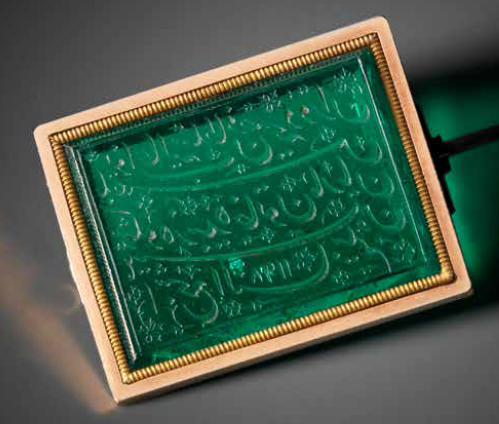 |
 |
|
9. Marian Hastings emerald seal - Bonham’s lot |
10. Samanid calligraphic dish - Christie’s lot 44, £15,000-25,000 |
This article was brought to you by the Islamic Arts specialist Dr Isabelle Imbert PH.D. in collaboration with Lot-Art.com
Lot-Art offers the largest database of Upcoming and Aftersale auction items, together with direct links to the most reputable auction houses and bidding platforms worldwide, to easily browse through all auctions from a single portal.
Lot-Art Investment Advisory can leverage on its extensive price database, expertise, and international network to assist new and established collectors in acquiring quality artworks which are also sound investments. Join us today for the best auctions browsing experience!
The LOT-ARTeam
LOT-ART | Worldwide Auctioning Made Easy
Other interesting articles
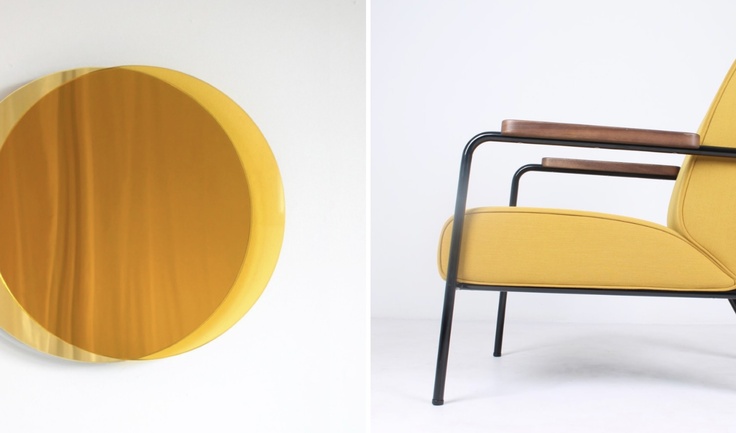
|
Wed Apr 24 2024
Masterly x Catawiki: "Homage" Collection | Exclusive DesignFor the installation at Salone del Mobile 2024, Catawiki and Masterly commissioned contemporary creators to reinterpret design icons. The auction "Homage" - A Tribute in Auction on April 28th is curated by Masterly founder, Nicole Uniquole, and includes the world-famous Eames Lounge Chair reimagined by Stefan Scholten. An auction inspired by the installation at Salone... |
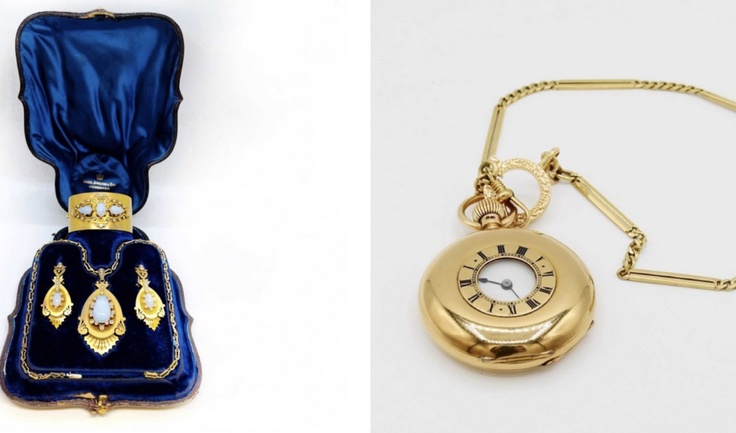
|
Tue Apr 23 2024
A Selection of Jewelry at Casa d'Aste Guidoriccio, ItalyCasa d'Aste Guidoriccio, Italy presents the Auction: "Jewels. A Selection of Jewelry and Precious from Private Collections" on April 30th. Discover the Auction Highlights or browse the full catalogues here » SELECTED LOTS LEFT: Platinum and Diamond Ring, Fabergé Victor Mayer Collection. Diamonds totalling 0.78 ct. Limited series 11/100. See Price Estimate... RIGHT: 750... |
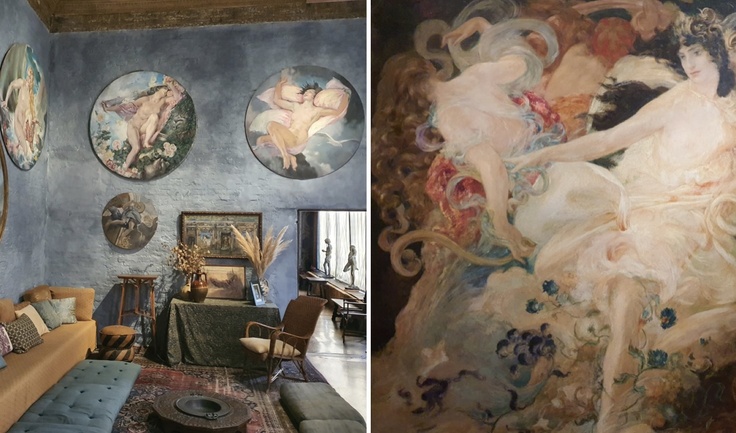
|
Mon Apr 22 2024
Enchantment at Palazzo Fortuny: 'Selva' by Eva Jospin in VeniceLEFT: Photograph of the Mariano Fortuny Y Madrazo Museum; RIGHT: Wagnerian Cycle. Parsifal. The Flower Maidens, Mariano Fortuny y Madrazo, 1896 Mariano Fortuny y Madrazo, born in Granada in 1871, was a renowned Spanish artist celebrated for his innovative contributions in the realms of fashion, photography, and lighting design. Fortuny gained global fame for the... |
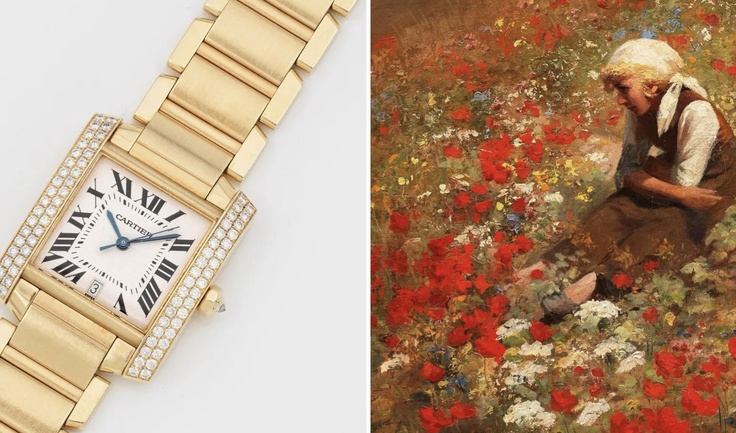
|
Sat Apr 20 2024
International Art at Schloss Ahlden, GermanySchloss Ahlden, Germany presents the 190th International Art Auction in four parts: Part I on 27 April Part II on 28 April Part III on 3 May Part IV on 4 May Discover the Auction Highlights or browse the full catalogues here » SELECTED LOTS LEFT: Lovis Corinth (1858 - 1925) - "Pair of Centaurs" Oil on canvas, laid down on canvas. Signed and dated 1917. See Date & Price... |